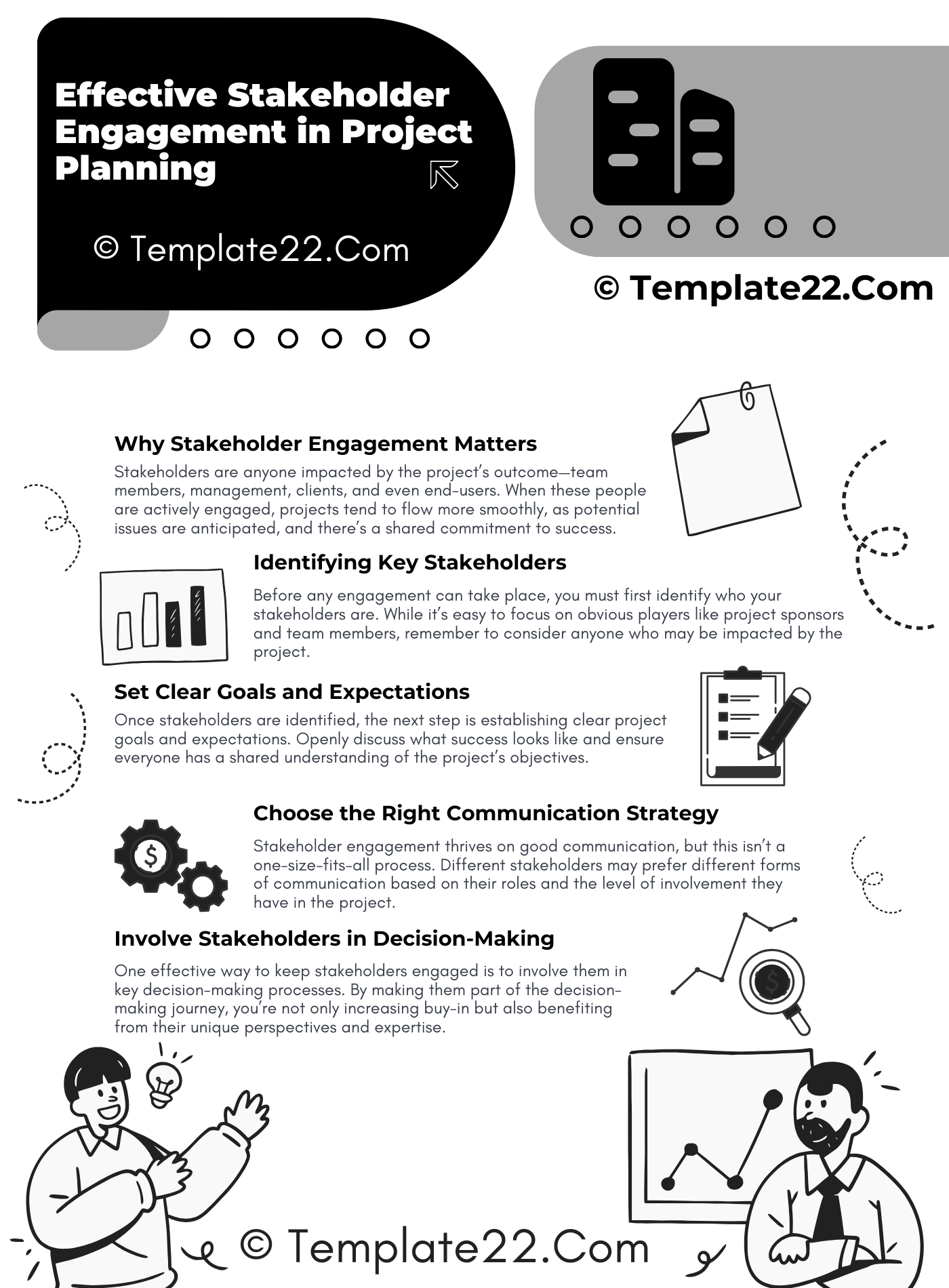 Engaging stakeholders is one of the most important yet challenging aspects of project planning. With effective stakeholder engagement, project managers can ensure everyone is on the same page, aligned with project goals, and committed to seeing it through. Let’s dive into how to make stakeholder engagement a seamless, impactful part of your project planning process.
Engaging stakeholders is one of the most important yet challenging aspects of project planning. With effective stakeholder engagement, project managers can ensure everyone is on the same page, aligned with project goals, and committed to seeing it through. Let’s dive into how to make stakeholder engagement a seamless, impactful part of your project planning process.
Why Stakeholder Engagement Matters
Stakeholders are anyone impacted by the project’s outcome—team members, management, clients, and even end-users. When these people are actively engaged, projects tend to flow more smoothly, as potential issues are anticipated, and there’s a shared commitment to success. Failing to engage stakeholders, on the other hand, can lead to misunderstandings, misaligned expectations, and resistance, all of which can derail even the most well-intentioned projects.
Identifying Key Stakeholders
Before any engagement can take place, you must first identify who your stakeholders are. While it’s easy to focus on obvious players like project sponsors and team members, remember to consider anyone who may be impacted by the project.
- Internal Stakeholders: These are individuals within the organization, like team members, department heads, and upper management. They’ll directly influence or be affected by the project’s outcomes.
- External Stakeholders: These might include clients, end-users, vendors, or even regulatory bodies. Their needs and requirements must be considered for a successful project.
Creating a stakeholder map can help visualize who the most influential players are and prioritize their engagement accordingly.
Set Clear Goals and Expectations
Once stakeholders are identified, the next step is establishing clear project goals and expectations. Openly discuss what success looks like and ensure everyone has a shared understanding of the project’s objectives.
CLICK HERE TO DOWNLOAD 300+ PROJECT MANAGEMENT TEMPLATES & DOCUMENTS IN EXCEL
How to Establish Goals:
- Communicate openly about what the project aims to achieve, including both the desired outcome and key milestones.
- Align on success metrics early on. These metrics will be a reference point for tracking progress.
- Clarify roles and responsibilities to avoid misunderstandings and ensure everyone understands their contribution to the project.
Choose the Right Communication Strategy
Stakeholder engagement thrives on good communication, but this isn’t a one-size-fits-all process. Different stakeholders may prefer different forms of communication based on their roles and the level of involvement they have in the project.
- Regular Updates for Key Stakeholders: For stakeholders who are deeply involved, like project sponsors and team leaders, frequent updates through weekly or bi-weekly meetings are valuable for maintaining alignment.
- Informational Emails for Secondary Stakeholders: For stakeholders with a lower level of involvement, concise monthly updates via email might be enough to keep them informed.
- Tailored Communication for External Stakeholders: For clients or external partners, structured, formal updates can help build trust and keep them in the loop without overwhelming them.
Involve Stakeholders in Decision-Making
One effective way to keep stakeholders engaged is to involve them in key decision-making processes. By making them part of the decision-making journey, you’re not only increasing buy-in but also benefiting from their unique perspectives and expertise.
Ways to Include Stakeholders:
- Workshops and Brainstorming Sessions: These foster a collaborative environment where stakeholders feel valued and heard.
- Feedback Loops: After each project phase, ask for feedback and make necessary adjustments. Stakeholders will appreciate being part of a responsive, adaptable process.
- Risk Management Discussions: Including stakeholders in discussions about potential project risks allows for a more comprehensive risk management plan.
Addressing and Resolving Conflicts Early
Conflicts are almost inevitable in any project involving multiple stakeholders with diverse perspectives. However, proactive conflict resolution can prevent small issues from escalating and disrupting the project.
Strategies for Conflict Resolution:
- Acknowledge and Address Concerns Promptly: Ignoring conflicts only allows them to fester. Listen to each party’s perspective and aim to find common ground.
- Establish a Resolution Process: Decide in advance how to handle conflicts, whether through mediation or by assigning a neutral decision-maker.
- Stay Solution-Oriented: Encourage stakeholders to focus on potential solutions rather than dwelling on disagreements.
Maintain Engagement Throughout the Project
Stakeholder engagement isn’t a “set it and forget it” task. Sustaining engagement requires regular check-ins and continued communication. As the project progresses, ensure that stakeholders stay updated and have opportunities to share feedback.
CLICK HERE TO DOWNLOAD 300+ PROJECT MANAGEMENT TEMPLATES & DOCUMENTS IN EXCEL
Tips for Sustaining Engagement:
- Celebrate Milestones Together: Recognize key achievements and express appreciation for stakeholders’ contributions. This fosters motivation and a sense of ownership.
- Continuous Feedback Loops: Keep the communication channels open for feedback at every stage. This flexibility allows you to adapt to changing needs.
- Use Visual Progress Reports: Sometimes, a simple visual representation of the project’s status can be more effective than lengthy updates. Dashboards and visual progress trackers keep information accessible and clear.
Conclusion
Effective stakeholder engagement is fundamental to successful project planning. By taking the time to identify stakeholders, communicate effectively, involve them in decision-making, and sustain engagement throughout the project, you create a strong foundation for project success. When stakeholders are engaged, they’re more likely to support the project’s goals, advocate for its success, and collaborate to overcome challenges.

